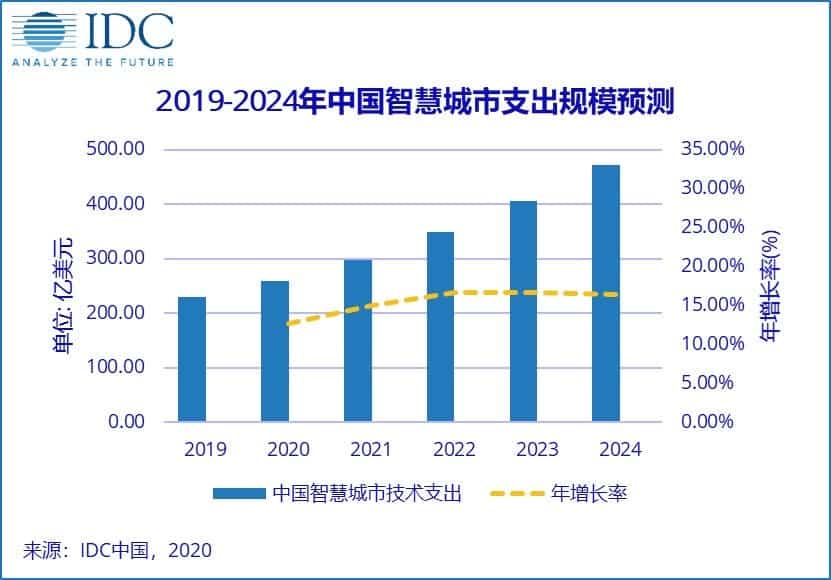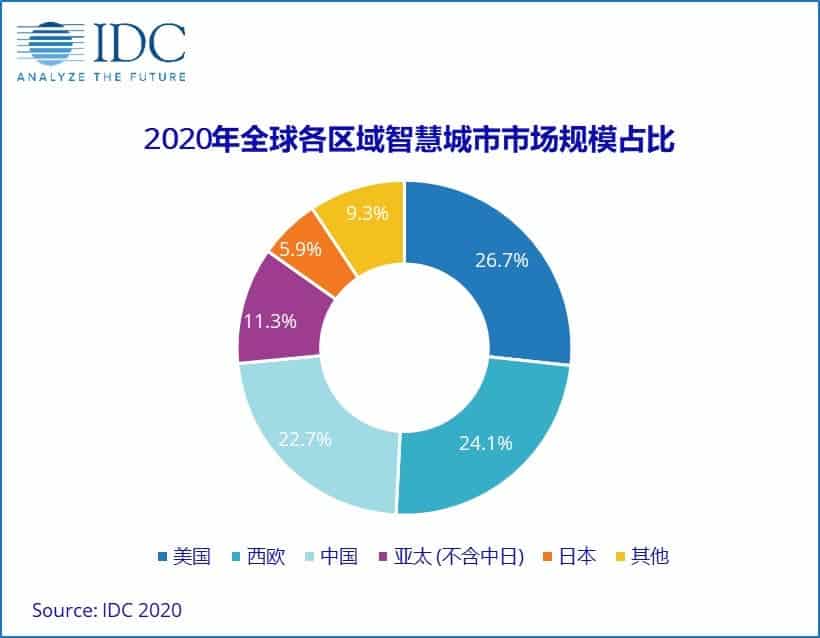According to the latest Worldwide Smart Cities Spending Guide (2020V1) released by IDC, the growth rate of global smart city – related spending has slowed due to the impact of the new coronavirus epidemic. However, it is expected that in the medium- and long-term period, it will resume and maintain a growth trend of over 15%.
How Coronavirus Affects Smart City Investments
IDC’s latest forecasts show that by 2020, related to a total investment of global smart city market will reach $114.4 billion, an increase of 11.1% over the 2019 year. This is also lower than the December 2019 release of the 18.9% growth forecast. However, IDC predicts that global smart city spending will gradually increase its growth rate in 2021. And it will achieve a compound annual growth rate (CAGR) of 14.6% during the forecast period 2020-2024.

By 2020, China’s market spending will reach $25.9 billion, a year-on-year increase of 12.7% from 2019. This is higher than the global average and is the second largest country after US spending. The three hottest investment projects in the Chinese market are, in turn, sustainable infrastructure, data-driven governance, and digital management. During the forecast period 2020-2024, the total expenditure of the three will continue to exceed half of the overall smart city investment.
Smart Cities in China
The construction and development of smart cities provide a large number of application scenarios for emerging technologies. This brings great development space for technology suppliers. By 2020, the top three application scenarios in which China’s market spending will account for the following are Smart Grids, Fixed Video Camera, and Connected Back Office. The proportion exceeds 40% of the total expenditure. This is basically consistent with the previous forecast.
Also Read: IDC: China’s Smart City Investment Will Reach 200 Billion Yuan ($29.77 Billion) In 2022
As the market matures, the proportion of these three mainstream application scenarios will decrease. With the development of smart city related technologies, the use cases are showing a diversified trend. And the influence of new scenes that are growing rapidly will gradually expand. In the forecast period of 2020-2024, the fastest growing application scenarios will be Open Data, Digital Twin, and Next-Gen Emergency PSAPs.

In China, the cities with the largest spending on this in 2020 are still Beijing, Shanghai, Shenzhen and Guangzhou. Smart city technology – related inputs are closely related to the city’s GDP and government budget. In the development stage of smart city technology, first-tier cities’ spending will continue to lead.
The Number 1 Smart City In The World
Singapore will continue to maintain its leading position in smart city investment in 2020. In this regard, London has surpassed Tokyo and New York to become the second largest city for investment. Due to the postponement of the Tokyo Summer Olympics under the influence of the epidemic, Tokyo temporarily reduced ICT investment in the late construction of some imperfect infrastructure, public transportation, sports venues, etc. So, the current forecast of Tokyo’s smart city – related investment will be slightly lower than that of London. From a regional perspective, the combined market size of the United States, Western Europe and China will continue to account for more than 70% of the global market in 2020. Among them, Western Europe and China are also the two fastest growing regions.





